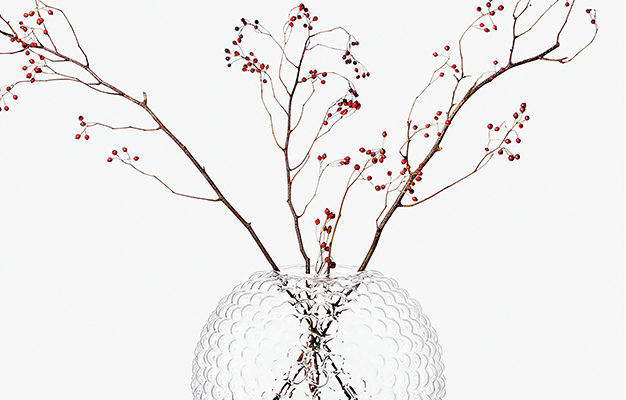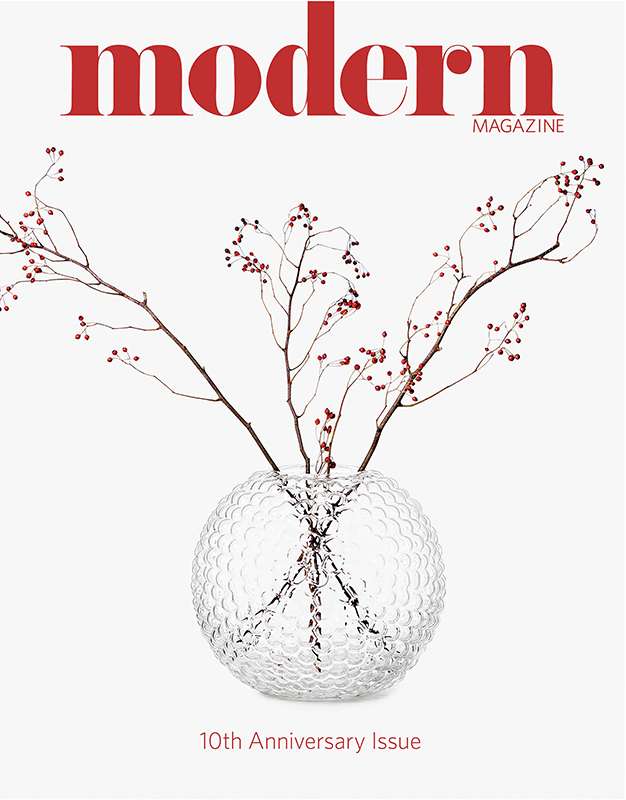
Feature
From the Editor: Our 10th Anniversary
THIS SPRING MARKS AN EXCITING MILESTONE: MODERN’s tenth anniversary. It just so happens that in this issue we also commemorate another landmark anniversary, the Bauhaus centennial. Though a lucky coincidence, the occasion makes me think about how the guiding principles of that radical design school have continued to shape the architects, designers, and makers who’ve appeared in our pages—and informed how we understand what it means to be modern. In the last decade, we’ve looked at design in its many forms—from architecture and furniture to industrial design and craft—which at once commune with the past and propel us into the future. The work we’ve featured has been many things: forward-thinking and inquisitive, practical and experimental, beautiful and idiosyncratic. But the essence of design, as Walter Gropius, the founder of the Bauhaus, said, is that it is “simply an integral part of the stuff of life.” And that is the connective tissue that ties the stories in this issue together, from architect Michael K. Chen’s eye-catching children’s library for a Bronx homeless shelter to the fanciful designs of French designer Hubert Le Gall.

Our first cover from Spring 2009.
So how did we get here? For some of our readers—or at least our newer ones—the story of how MODERN came to be is scarcely known. And so I asked Gregory Cerio, the magazine’s first editor and current editor of our sister publication, The Magazine ANTIQUES, to fill us in on its beginnings:
As it was in design history, so it was in magazine publishing: antiques led the way to the modern. The seeds that grew into MODERN were sown when Betsy Pochoda took over as editor of The Magazine ANTIQUES in 2008 and began to run stories about twentieth-century design. I wrote many of them. They were about fascinating folks like Gilbert Rohde—who convinced D. J. De Pree, head of the Herman Miller furniture company, that he’d be doing God’s work if he began to make modern pieces rather than historical reproductions—and subjects such as often-overlooked British modern design. Some TMA readers grumbled; most were intrigued. An idea came forth in 2009 to produce a one-off supplement to TMA about twentieth-century and contemporary design, aimed at prospective collectors. Advertiser response was so strong that a quarterly magazine was born. And here we are. Happy birthday, kiddo!

Our Spring 2019, 10th anniversary cover.
MODERN has been a labor of love by many, and is here thanks to the hard work and know-how of the founding publisher, Jennifer Roberts, the intrepid foresight of Betsy Pochoda, and Greg’s early vision, which set the magazine on its course today. In 2012 Beth Dunlop took the helm, and during her tenure, she broadened our scope, incorporating more craft and architecture, and proving that to be truly modern, the magazine needed to have its finger on the pulse of the contemporary design scene, too. From the very beginning, our editor-at-large Eleanor Gustafson has worked tirelessly behind the scenes, and is owed a debt of gratitude for her shrewd and meticulous editing that ensures that the storytelling is both lively and coherent. And if not for the talents of our small, hardworking team—Cara Barrese, Martin Minerva, Sammy Dalati, Katherine Lanza, and Adeline Saez—we wouldn’t be able to produce the thoughtful, visually enticing content we do every issue.
And so we return to the task at hand: our Spring issue. On the very last page, in “Parting Shot,” we celebrate the life of design pioneer Florence Knoll Bassett, who died in January at 101. I can’t think of a better way to conclude the tenth anniversary issue than with a final look at the woman who defined modernism, not only for her own generation but for those to follow. Her designs are still coveted and in production today, and her innovative approach to spatial planning can be found in nearly every office. Her legacy is proof that design is, as Gropius said, “simply an integral part of the stuff of life.”










